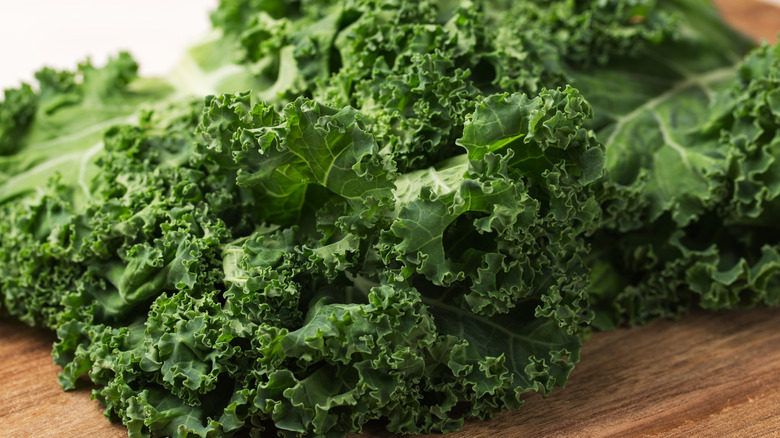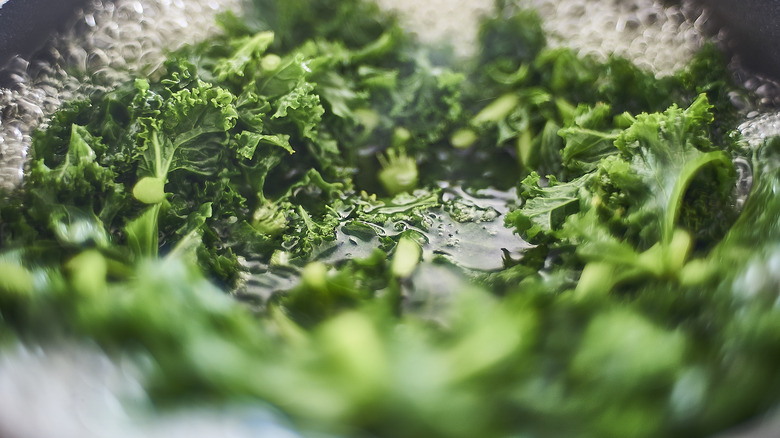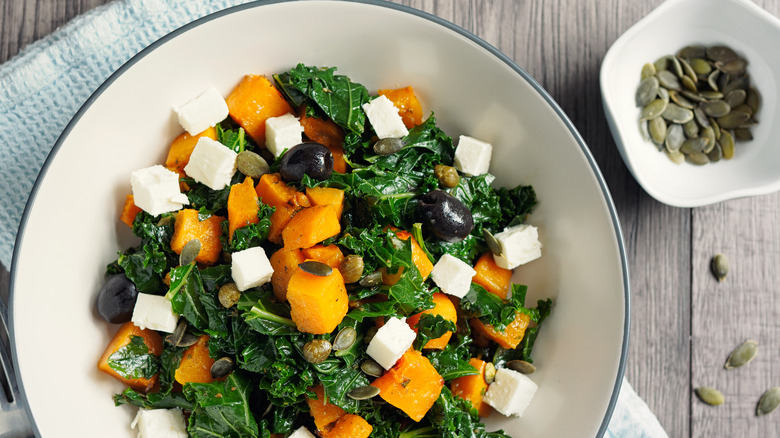How To Fix The Bitter Taste In Kale
Kale is one of the most versatile leafy greens. From salads and smoothies to savory green soups and creamy pasta, you can enjoy the fibrous leaves in just about anything your stomach desires. But, the crunchy cabbage cousin is also teeming with vitamins and minerals, making it one of the most nutrient-dense veggies you can sink your teeth into.
However, similar to other leafy greens like spinach and broccoli rabe, kale can also be rather pungent — a trait that's actually intended to keep hungry animals at bay. When the leaves are chewed (broken, cut, crushed, etc.), two enzymes (myrosinase and glucosinolate), which are normally separated, meld to form isothiocyanates, the chemical responsible for the distinct bitter taste.
If you're not a fan of kale's natural, sharp flavors but still want to reap its nutritional benefits, fret not. You can tone down the bitterness by opting for varieties like Tuscan (also known as Lacinato, dinosaur, or black kale) or Red Russian kale. Not only are they far less bitter than the more common curly variety, but they're also far sweeter, featuring a milder and semi-nutty flavor.
However, if you accidentally grab a more bitter variety or simply happen to have a bunch of the curly stuff on hand, there are other ways you can reduce the strong flavors, from how you cook the leaves to the types of seasonings you use.
How to cook kale so it doesn't taste so bitter
In addition to buying sweeter varieties, the way you prepare kale can also impact its bitter qualities. Similar to how cooking collard greens can fix their bitter taste, blanching kale is one way to cut down on its more robust flavors. This cooking method, which involves submerging fruits and vegetables into boiling water before cooling them in an ice bath, helps to leach out some of the bitterness because the glucosinolates are water-soluble, meaning they easily dissolve in water.
After blanching the greens, sauteing them in oil can help develop more flavor by allowing the cruciferous vegetable to caramelize its natural sugars. This will also help to further counter the sheer bitter taste. Similarly, braising kale has much the same effect. The combination of wet and dry heat helps to tenderize the firm leaves and imparts a greater depth of flavor, too. However, with braising, just be sure to saute the kale first before covering the pan and simmering it in stock or broth.
Tame the bitterness with other strong flavors
It's no secret that a little seasoning can go a long way, and bitter kale is no exception to this rule. A simple dash of salt can certainly make a difference as far as bitterness is concerned. But, you can also tame the flavors by adding a little sweetness to the mix too, such as a pinch of white or brown sugar or even a bit of honey or other liquid sweeteners like agave nectar or maple syrup. Just be sure to add in a little at a time when cooking so your kale doesn't come out too sweet.
And, while sugar helps to balance out the bitterness, spicy flavors actually work wonders at masking it, too. So, feel free to crank up the heat with a pinch of red pepper flakes, paprika, cayenne pepper, and chili powder to taste. Moreover, incorporating acids and fats while preparing your kale, such as lemon juice and butter, can also help go the distance.



